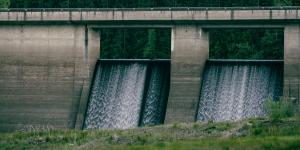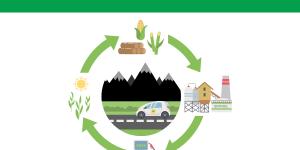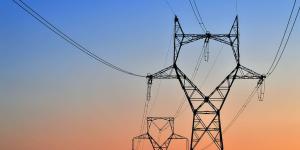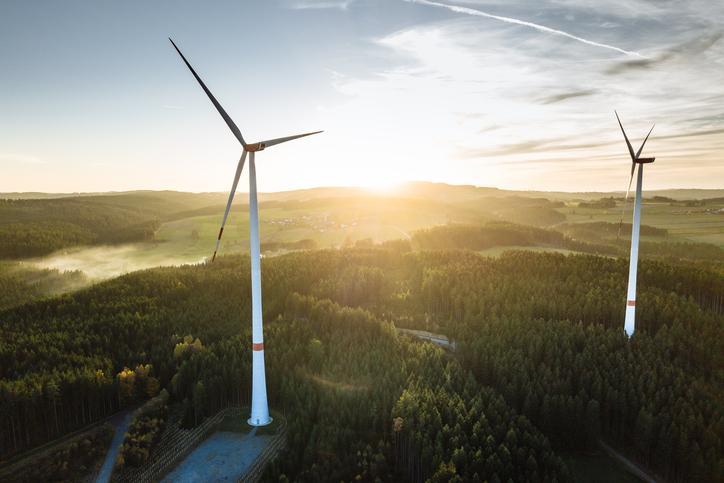Pros & Cons of Wind Energy


Wind energy has emerged as a leading force in the renewable energy revolution. It harnesses the power of moving air to generate electricity, offering a clean and sustainable alternative to fossil fuels. However, like any technology, wind power comes with its own set of advantages and disadvantages. Evaluating both sides of the equation is crucial for making informed decisions about our energy future.
In this article by thedailyECO, we explore both the advantages and disadvantages of wind energy, providing a comprehensive overview of this powerful yet complex renewable resource.
What is wind energy?
Wind energy harnesses the power of wind to generate electricity. At its core, wind energy conversion involves capturing the kinetic energy of moving air and converting it into mechanical power, which is then transformed into electrical power. This process is facilitated by wind turbines, which are the primary technology used to harness wind energy.
Wind power has a surprisingly long history, dating back to the 500-900 AD windmills of Persia used for grinding grain and pumping water. These early designs, with their horizontal axes, inspired the iconic Dutch windmills that dominated the European landscape by the 12th century, helping reclaim land by draining wetlands.
The late 19th century marked the birth of wind turbines for electricity. Pioneering inventors harnessed wind power to light homes, and the 20th century, fueled by energy crises, saw significant advancements. Modern three-bladed turbines emerged, Denmark became a wind energy leader, and technology improved for materials, controls, and grid integration.
Today, wind energy is one of the fastest-growing renewable energy sources. Continuous advancements in turbine design, materials, and control systems have increased efficiency and reduced costs, making wind energy a vital component of the global transition to sustainable energy.
Delve deeper into the world of renewable and non-renewable energy sources in our follow-up article.
How does wind energy work step by step?
Wind turbines consist of several key components that work together to convert wind into electricity:
- Rotor Blades: the most visible parts of the wind turbine, rotor blades, are designed to catch the wind. Modern turbines typically have three blades, which are aerodynamically shaped to maximize energy capture.
- Nacelle: the nacelle sits atop the turbine tower and houses essential components such as the gearbox, generator, and control systems. It ensures that the kinetic energy from the blades is efficiently transferred to the generator.
- Tower: the tower elevates the rotor blades to a height where wind speeds are typically higher and more consistent. Towers can range in height, with modern onshore turbines often standing between 80 and 120 meters tall.
- Generator: as the rotor blades spin, they turn a shaft connected to a generator inside the nacelle. This generator converts the mechanical energy from the spinning blades into electrical energy.
- Gearbox (optional): many turbines use a gearbox to increase the rotational speed of the shaft, which allows the generator to operate more efficiently. However, some modern designs use direct-drive mechanisms that eliminate the need for a gearbox.
- Controller: the turbine’s controller monitors wind speed and direction, adjusting the rotor blades' pitch and the turbine’s yaw to optimize energy capture and protect the turbine from damage during high winds.
- Anemometer and Wind Vane: these instruments measure wind speed and direction, providing data to the turbine’s control system to ensure optimal alignment with the wind.
When the wind blows, it causes the rotor blades to spin, converting the kinetic energy of the wind into rotational energy. This rotational energy is transferred through the gearbox (if present) to the generator, which produces electricity. The electricity is then transmitted through cables down the tower and into the power grid, where it can be distributed for use.
Learn about another promising contender in the renewable energy race, biomethane, in another informative article.
Advantages of wind energy
Wind energy's global production capacity has been increasing significantly, showcasing its potential as a major contributor to the global energy mix. Now, let's delve into some key advantages of wind energy on a global scale:
1. It is a renewable and inexhaustible resource
Wind energy is derived from wind, an inexhaustible natural resource. Unlike fossil fuels, which are finite and deplete over time, wind will continue to blow, making wind energy a sustainable option with no expiration date.
2. It is 100% clean energy
One of the most significant advantages of wind energy is that it is entirely clean. It produces no pollutants or greenhouse gases, meaning it does not contribute to global warming or ecosystem destruction. This clean energy source helps reduce our carbon footprint and combat climate change.
3. It is very safe
Wind energy is one of the safest energy sources available. It does not produce hazardous waste or pose significant risks in the event of accidents, unlike nuclear energy or fossil fuels. This makes it a reliable and secure energy option.
4. It promotes energy independence
Wind energy can be harnessed in many parts of the world, fostering energy independence. Countries with high wind potential can develop their own energy resources, reducing reliance on imported fuels and enhancing national security.
5. It has minimal transportation impact
The infrastructure needed for wind farms is relatively straightforward and has minimal transportation requirements. Unlike fossil fuels, which require extensive networks of pipelines and transportation, wind energy infrastructure primarily involves the transportation of turbine components, which has a lower environmental impact.
6. It has a low ground impact
Wind farms have a minimal impact on soil and land erosion. They occupy less space compared to other energy installations and do not produce polluting waste. This helps preserve the land and its ecosystems.
7. It protects aquifers
Wind energy does not contaminate water sources. Since it produces no hazardous waste, it maintains the quality of local water reserves, protecting aquatic ecosystems and ensuring clean water supplies.

8. It is cost-effective
Wind energy is becoming increasingly cost-competitive. In some cases, it is as affordable as coal and nuclear energy. Wind turbines can be dismantled at the end of their lifecycle without significant environmental impact. Maintenance costs are relatively low, contributing to its economic viability.
9. It is compatible with other activities
Wind energy is compatible with agriculture and livestock farming. Wind farms can coexist with traditional land uses, allowing local economies to thrive without requiring specialized labor or disrupting existing activities.
10. It has a rapid deployment and scalability
Wind farms can be deployed relatively quickly compared to large-scale fossil fuel or nuclear power plants. They can range from small community-scale installations to large utility-scale projects, providing flexibility in meeting varying energy demands.
11. It has a low lifetime water consumption
Unlike traditional power plants that require substantial water for cooling processes, wind turbines consume negligible amounts of water during operation. This reduces strain on water resources, particularly in arid regions facing water scarcity.
12. It has long-term price stability
Wind energy benefits from predictable and stable long-term pricing. Unlike fossil fuels, which are subject to price volatility influenced by geopolitical factors, wind energy costs are primarily associated with initial capital investment and operational maintenance.
Disadvantages of wind energy
In the previous section, we covered the various advantages of wind energy. However, it's important to consider the significant challenges and drawbacks associated with this renewable energy source:
1. It is dependent on weather conditions
One of the primary drawbacks of wind energy is its variability and dependence on weather patterns. Wind turbines require consistent wind speeds between 10 to 40 km/h to operate efficiently. When wind speeds are too low, or too high, turbines may not generate electricity effectively. This intermittency necessitates backup from other energy sources, whether fossil fuels or alternative clean energy technologies.
2. It has certain operational constraints
Wind turbines are optimized to operate within specific wind speed ranges. Outside these optimal conditions, such as during calm periods or during severe storms, turbines may need to be shut down to prevent damage. Adjustments to blade design and operational protocols are required to mitigate these risks effectively.
3. It presents challenges when it comes to predictability
The unpredictability of wind patterns presents challenges for energy planning and grid management. While meteorological forecasting has improved, accurately predicting wind availability remains a limitation. This uncertainty complicates efforts to ensure reliable and stable electricity supply from wind farms.
4. It has high transmission and infrastructure costs
Wind farms are often located in remote areas with high wind potential, distant from major population centers where electricity demand is highest. Connecting these farms to the grid requires significant investment in transmission infrastructure. Energy loss during transmission and the environmental impact of infrastructure installation are additional considerations.
5. The energy cannot be stored
Unlike traditional power sources such as coal or nuclear, wind energy cannot be stored for later use. Electricity generated by wind turbines must be consumed in real-time, posing challenges for grid stability and limiting its ability to replace dispatchable power sources.
6. It has low energy density
Wind energy has a low energy density, requiring a large number of turbines over expansive areas to generate significant electricity output. While turbines are cost-effective and relatively easy to deploy, maximizing energy production necessitates extensive land use, potentially impacting landscapes and local ecosystems.
7. It has a visual and aesthetic impact
The construction of wind farms can have a visual impact on natural landscapes, leading to aesthetic concerns among local communities. The size and spacing of turbines, though necessary for optimal wind capture, may detract from scenic views and cultural heritage sites.
8. It is noisy
Early wind turbines were criticized for noise emissions during operation, affecting nearby residents. Advances in turbine design and engineering have mitigated these concerns, but noise remains an occasional issue in densely populated areas.
9. It has an environmental impact on wildlife
Wind turbines pose risks to bird and bat populations, particularly during migration periods. Collisions with turbine blades can result in fatalities, impacting local biodiversity. Ongoing research and mitigation strategies are essential to minimize these environmental impacts.
13. It has maintenance challenges
Wind turbines require regular maintenance to ensure optimal performance and longevity. Accessing turbines for maintenance and repair in remote or offshore locations can be logistically challenging and costly, impacting overall operational efficiency.
Explore the contrasting worlds of wind energy and natural gas, and their roles in the global energy landscape, in another engaging article.

If you want to read similar articles to Pros & Cons of Wind Energy, we recommend you visit our Renewable energies category.







